Happy Wednesday! Can you guess which Morning Dispatcher listened to Kanye West’s new song 24 times yesterday?
Quick Hits: Today’s Top Stories
-
As of Tuesday night, 2,634,432 cases of COVID-19 have been reported in the United States (an increase of 46,410 from yesterday) and 127,410 deaths have been attributed to the virus (an increase of 1,279 from yesterday), according to the Johns Hopkins University COVID-19 Dashboard, leading to a mortality rate among confirmed cases of 4.8 percent (the true mortality rate is likely much lower, between 0.4 percent and 1.4 percent, but it’s impossible to determine precisely due to incomplete testing regimens). Of 32,206,245 coronavirus tests conducted in the United States (648,838 conducted since yesterday), 8.2 percent have come back positive.


-
Dr. Anthony Fauci testified in a Senate hearing yesterday that the United States may begin to see up to 100,000 new coronavirus cases daily. “I can’t make an accurate prediction, but it will be very disturbing, I will guarantee you that,” he warned.
-
In a victory for advocates of the Free Exercise Clause, the Supreme Court yesterday ruled 5-4 that states that offer public funding for private school scholarships must allow religious schools to participate in those programs.
-
The European Union will officially reopen its borders today to residents of 15 countries the bloc deemed to have the coronavirus pandemic under control. The United States is not on the list.
-
Joe Biden held his first press conference in three months yesterday in Delaware, laying out his potential coronavirus response and fielding questions from reporters about the alleged Russian bounties on U.S. soldiers, attacks on historical statues around the country, and his cognitive ability.
-
Just hours before it was set to expire, the Senate extended the Paycheck Protection Program until August 8. The program currently has more than $130 billion in unclaimed funds.
-
Democratic Senate candidates Amy McGrath and John Hickenlooper successfully cleared their primaries in Kentucky and Colorado, respectively. McGrath is set to face off against Republican Majority Leader Mitch McConnell in November, while Hickenlooper will challenge incumbent Sen. Cory Gardner.
-
A new Pew Research Center poll found a sharp decrease in Republican satisfaction with the “way things are going in this country,” from 55 percent in April to just 19 percent today.
Are COVID Surges Attributable to the Recent Protests?
Over the last month, the two biggest stories in America have been the anti-racism protests sparked by the death of George Floyd and the rapid resurgence of COVID-19 following two months of the virus slowing. The obvious question linking the two: Have weeks of mass assembly and protest been an accelerant to viral transmission?
It’s been difficult to drill down on this question, in part because of accusations of politicization and fuzzy data collection. New York City and San Francisco, for instance, have opted not to have their COVID contact tracers ask potentially infected people whether they attended a protest—a strategy that has undoubtedly made the relationship between protests and the pandemic harder to suss out.
Nevertheless, enough data has trickled in to give us a rough idea of our answer. Based on what we know now, while the George Floyd protests may have presented an increased infection risk to the protesters themselves, it seems they haven’t yet caused broader infection spikes in the cities in which they took place.
Let’s unpack this a little. To begin with, there’s the fact that many protesters have taken steps to cut down on transmission—maintaining some level of social distancing even in a crowd, wearing masks, and, most critically, protesting outdoors, where passing along a critical load of the virus is far more difficult.
This is the reason most frequently cited for why many hoped the protests would not lead to case spikes, but it’s not a sufficient explanation in itself. After all, as any epidemiologist would tell you, all these precautions are simply a matter of managing risk—they might limit spread within a group, but there’s no guarantee they can prevent it.
Sure enough, the data from those cities and states that have kept tabs on infections at protests shows that in many cases some transmission was in fact taking place. In Boston, 400 protesters later tested positive for COVID. In Houston, police officers reported increased cases among their ranks after the protests. And in South Carolina, demonstrators cut off in-person protests early after 13 demonstrators tested positive for the virus.
And yet many of the cities that experienced the biggest protests, like New York, Philadelphia, and Minneapolis, have seen no major changes yet to their former coronavirus trajectories. The city of San Francisco might not be keeping track of protest attendance in its contact tracing, but Alameda County, which includes many of its suburbs, is asking those questions—and county officials say the protests are “not emerging as a risk for the most recent cases that we’re seeing in the county.”
So what gives here? The missing link here appears to be in the behavior not of the protestors but of everyone else. These mass protests didn’t begin back in April, when most of the country was still hermetically sealed away, but in June, when it was already well on its way to reopening. The protesters were the ones making headlines, but the whole country was already beginning to get comfortable mingling again.
Or at least they were getting comfortable, until the protests started. For many, the prospect of major civic unrest proved just as powerful an inducement to stay at home as the virus itself had months before. According to a fascinating new study of cellphone data in 300 U.S. cities from the National Bureau of Economic Research, this actually meant that social distancing increased on the whole in cities with major protests during the days when those protests were at their fiercest.
This one-two punch—that protests may have raised the risk of infection among the marchers but indirectly lowered it in their communities more widely—has been garbled in some press reports, which have erroneously suggested that it demonstrates no link between protests and the pandemic at all. This is both misleading and decreasingly true: Although the protests are ongoing, the major social unrest that accompanied them for much of June has largely subsided. Going by the logic of the NBER report, this would suggest that ongoing protests could be more likely to have a net positive effect on new infections.
On the other side of the coin, some commentators have pointed to the relative youth of many new COVID patients as a strong indicator that protests, overwhelmingly constituted of the young, may have played a major role in the latest surge. There may be something to this—but experts we spoke to point out that young people are also likeliest to be participating in high-risk activities like socializing at bars. As Dr. Anthony Fauci testified yesterday in Congress: “Bars, really not good. Really not good.”
While there are undeniable partisan pressures to think of the latest round of COVID transmission as being simply due to protests or simply due to increased economic activity, the reality is that these things likely feed into one another. One place where the disease has taken off in recent days is Atlanta, a city that was racked by protests and is in a state that was one of the earliest in the nation to begin the reopening process. To suppose there wasn’t some overlap beggars belief; it isn’t as though America is made up of those who protest police brutality and those who get drinks with their friends.It’s the exponential logic of infection: Bars may be more dangerous than protests, but the more bar infections take place, the more dangerous protests will get, and the more protest infections take place, the less safe anyone will be at a bar.
‘There Are Days, I Am Sure, He Feels Like a Man Without a Home’
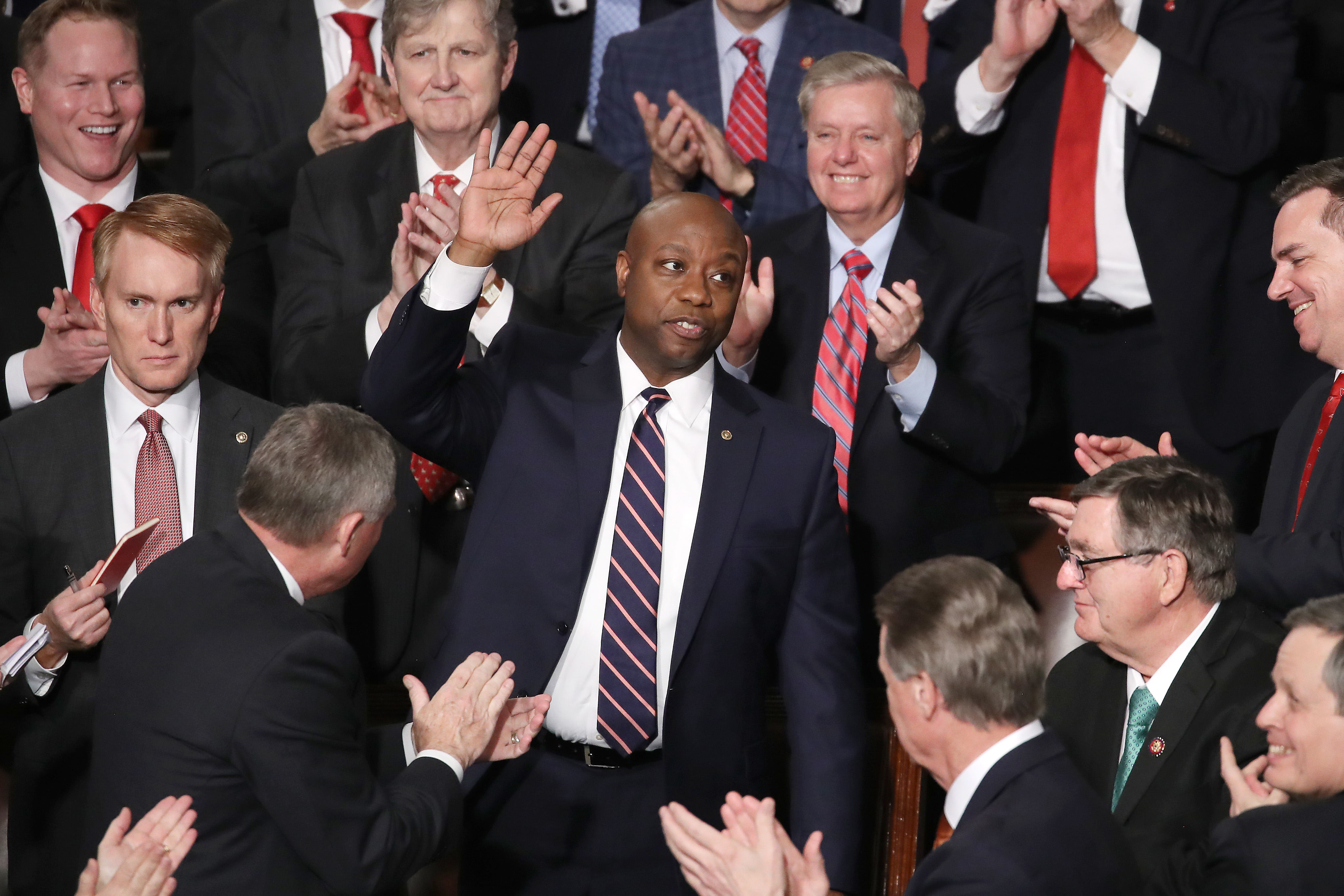
South Carolina Sen. Tim Scott has been in the news recently for his work on the GOP’s (now stalled) police reform efforts. But even without major legislation pending, he’s one of the most interesting members of Congress.
Declan talked to Scott and some of his colleagues—including Mitt Romney, Ben Sasse, Trey Gowdy, and Marco Rubio—about Scott’s role in the Republican party. Some excerpts of his profile are below, but you can read the whole thing here.
On Scott’s decision to join the Republican Party:
If it weren’t for a handful of Democrats running for the Charleston County Council 25 years ago, Scott’s career could have been a whole lot more conventional—and a whole lot less impactful. He was a successful businessman in Charleston—he owned his own Allstate agency—when he began thinking about a career in public service. The local Democratic Party told him to “get in line.” The Republican Party? “We’d love to see you run.”
“There’s no doubt that number one, philosophically, I’m a Republican,” Scott told me. “I was then, I am now. But everybody that I knew that was African American was a Democrat. So my natural inclination was at least to give it a shot.”
Does he wish more black politicians made the choice he did, forever losing the ‘lone black Republican in the Senate’ tagline included in every story about him? “Misery loves company.” I could hear his smile through the phone. “I welcome all to come and have some of this! That would be awesome!”
But one quarter-century and a national political career later, he’s happy with his decision. “Sometimes you gotta thank God when they say no,” he said with a laugh. “Had I been a Democrat—even if I was lucky enough to somehow convince South Carolina voters to vote for me as a Democrat—then my relationship with the White House would have been completely different now. … I find myself having access to the president when I need it the most, and when I want it usually.”
On the tightrope he tries to walk between the different aspects of his identity:
To Scott, his blackness and his partisan affiliation makes perfect sense: He’s lived the American dream, rising from poverty to build a series of successful businesses. He’s a devout Christian committed to the preservation of religious liberty. But to interlopers projecting their own experiences and beliefs onto him, two of his three core identities are in direct contradiction with one another. Leaning too hard into one elicits accusations of being traitorous to the other.
Look at Twitter. “Tim Scott was the house negro who run to the master to tell that other slaves were planning to run away. Slavery might be over but Tim Scott’s mind is still in chains and shackles,” one reply to Scott says. “I need you to STOP talking about Charlottesville like our President said something racist when you and I BOTH KNOW HE DIDN’T. STOP SPREADING THAT SHIT. IT’S A LIE and you KNOW it,” reads another.
Scott himself tried to provide a window into his world on the Senate floor after Jeff Sessions’ attorney general confirmation battle in February 2017. “I go on to read from folks who wanted to share their opinions about my endorsing Jeff Sessions,” he read. “‘You are a disgrace to the black race.’ Anthony Burnum at @burmanr says, ‘You are an Uncle Tom, Scott. You’re for Sessions. How does a black man turn on his own?’” Scott took off his glasses. “I left out all the ones that used the N-word. Just felt like that would not be appropriate.”
“If you sign up to be a black conservative, the chances are very high you will be attacked. It comes with the territory.”
A lifetime of vitriol has certainly thickened Scott’s skin. But the result is a heartbreaking numbness. “I felt this way in high school,” he acknowledged. “I kind of liked everybody and didn’t want to be pigeonholed. I was called everything from Oreo to the N-word. Which was fascinating back then. It’s not quite as fascinating now because I’ve had it so often. It’s”—he paused—“you know, you shrug your shoulders at most of it.”
Worth Your Time
-
“The Lincoln Project’s ads—personally abusive, overwrought, pointlessly salacious, and trip-wired with non sequiturs—are familiar,” laments Atlantic staff writer Andy Ferguson this week on the PAC’s aggressive crusade against President Trump. Ferguson explains how Lincoln—the project’s namesake—started out as a biased journalist, but emerged from his partisan cocoon as a changed and mature leader. As Ferguson contends, however, “such growth is unlikely to overtake the Lincoln Project while it peers obsessively at the object of its hatred”—Trump. The Lincoln Project is ultimately less about persuading moderates, as the PAC’s so-called Republican leadership proclaims, and more about mocking the president for the entertainment of those who already dislike him. And in that sense, the Lincoln Project is like the man it seeks to unseat.
-
The rise of the 24 hour news cycle has engendered among social media users a compulsion to act and opine—or in social justice language, ‘speak truth to power’—on every political issue du jour. “Constant scrolling and opinion overdose make us ripe for cognitive shortcuts,” writes Arc Digital associate editor Bonny Brooks. “And in response we often get simultaneously shallow and hysterical expressions of feeling: rushed apologies, ill-informed denunciations, and ineffective slogans.”
-
In Commentary this week, Rob Long explains the youth craze surrounding TikTok. Rather than a weapon for Chinese government to wield at its disposal as many Americans have feared, Long writes that the social media app is actually “a spectacular piece of pro-American propaganda.” TikTok has gained so much popularity precisely because it is dominated by normal—albeit rich—American youths rather than Hollywood starlets. “If the last century was shaped by American movies and music, perhaps this one will be guided by TikTok’s real-life glimpses at gleaming American kitchens.”
Presented Without Comment
Toeing the Company Line
-
National Review writer—and long-time friend of the podcast—Kevin Williamson joined Jonah for the latest episode of The Remnant. What are statue-defacers actually accomplishing? Why are Americans “a bunch of maniacs” compared to our continental comrades? And what is Kevin’s obsession with Switzerland all about, anyway? All this, and more!
-
Anti-racism is a noble and just cause, David writes in his latest French Press (🔒), but the cancel culture that has engulfed many of our elite institutions in the name of “anti-racism” is not. “Aside from eating away at the culture of free speech that should characterize and define important American institutions,” David argues, cancel culture “has two particularly pernicious effects on the American race debate—it distracts, and it deceives.”
-
Back in 1974, a group of Republican politicians went to Nixon and said he should resign, for the sake of the party and the country. Nixon did. Jonah writes that our sharp partisanship is actually the result of weak parties, which makes such an occurrence unlikely today.
Let Us Know
Who do you think has been the most influential member of Congress these past few years? What criteria did you use to arrive at your conclusion?
Reporting by Declan Garvey (@declanpgarvey), Andrew Egger (@EggerDC), Sarah Isgur (@whignewtons), Charlotte Lawson (@charlotteUVA), Audrey Fahlberg (@FahlOutBerg), Nate Hochman (@njhochman), and Steve Hayes (@stephenfhayes).
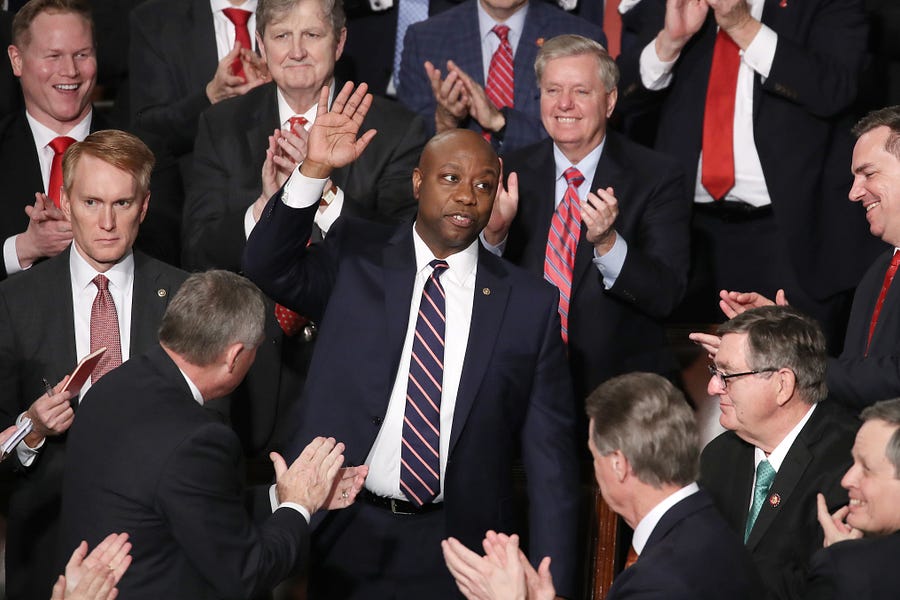

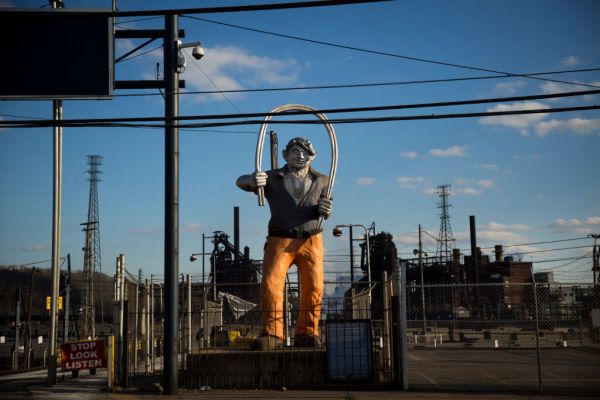
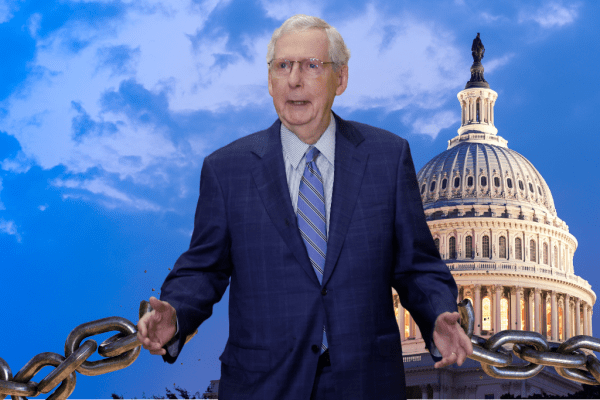
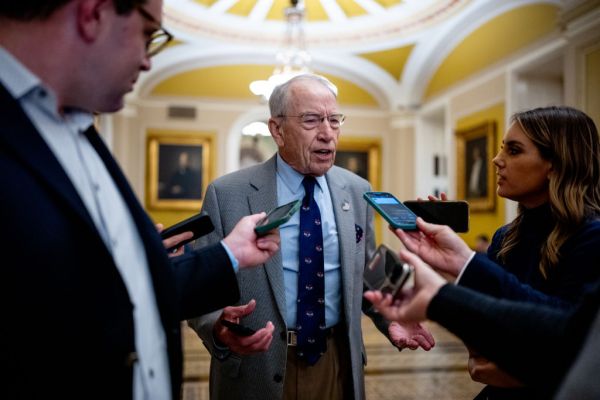
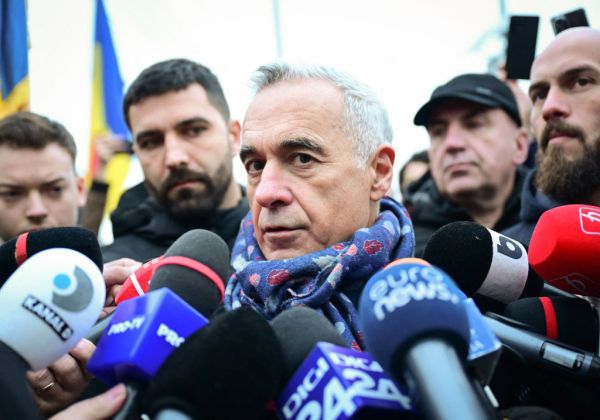

Please note that we at The Dispatch hold ourselves, our work, and our commenters to a higher standard than other places on the internet. We welcome comments that foster genuine debate or discussion—including comments critical of us or our work—but responses that include ad hominem attacks on fellow Dispatch members or are intended to stoke fear and anger may be moderated.
You are currently using a limited time guest pass and do not have access to commenting. Consider subscribing to join the conversation.
With your membership, you only have the ability to comment on The Morning Dispatch articles. Consider upgrading to join the conversation everywhere.